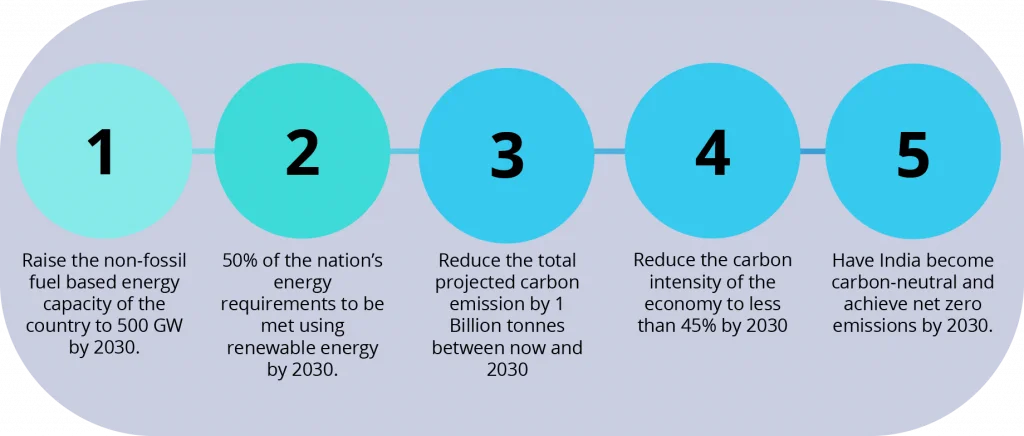Answer:
| Approach:
Introduction
- Brief about UNFCCC and COP26.
Body
- Discuss about the major outcomes of COP 26.
- Write about commitments made by India in COP 26.
Conclusion
Conclude your answer with a futuristic approach. |
Introduction:
The United Nations Framework Convention on Climate Change (UNFCCC) is an international treaty established in 1992 to address the urgent issue of climate change. The UNFCCC provides a platform for nations to cooperate and take action to mitigate greenhouse gas emissions and adapt to the impacts of climate change. It has been ratified by almost all countries, making it nearly universal in its membership.
Body:
Conference of Parties (COP26) to the UNFCCC yielded significant outcomes in global climate action.
- Methane Pledge:
- The European Union and the US launched a significant pledge to reduce greenhouse gas methane emissions.
- Members of the alliance committed to lowering global methane emissions by 30% below 2020 levels by 2030.
- The pledge has the potential to prevent 0.2 degrees Celsius of global warming.
- Deforestation Pledge:
- More than 100 national leaders pledged to halt and reverse deforestation and land degradation by 2030.
- The agreement expands on the commitment made by 40 countries in the 2014 New York Declaration of Forests.
Resources to support this objective:
- Call for Climate Finance: India highlighted that climate finance should be increased to at least USD 1 trillion, surpassing the 2009 commitment of USD 100 billion. India emphasized the importance of unity and strength among Like-Minded Developing Countries (LMDC) in UNFCCC negotiations.
- Infrastructure for Resilient Island States (IRIS): India launched the IRIS initiative to develop the infrastructure of small island developing nations (SIDN). SIDNs face significant threats from climate change, and the initiative aims to provide timely information through data systems.
- One Sun One World One Grid Group (OSOWOG): India and the United Kingdom initiated the OSOWOG to harness solar energy and enable its seamless transmission across borders.

India’s Commitments in COP26:
- Net-zero Emissions: India committed to achieving net-zero emissions by 2070, indicating its dedication to long-term climate action.
- Non-Fossil Energy Capacity: India aims to increase its non-fossil energy capacity to 500 GW by 2030, promoting the growth of renewable energy sources.
- Carbon Intensity Reduction: India pledged to reduce its economy’s carbon intensity by 45% by 2030, indicating a commitment to sustainable and low-carbon development.
- Renewable Energy Adoption: India aims to fulfil 50% of its energy requirement through renewable energy sources by 2030, contributing to a cleaner energy mix.
- Carbon Emissions Reduction: India committed to reducing 1 billion tonnes of carbon emissions from the total projected emissions by 2030.
Conclusion:
India made commitments at COP26, including achieving net-zero emissions by 2070, expanding non-fossil energy capacity, reducing carbon intensity, and promoting renewable energy. These commitments contribute to addressing climate change and advancing sustainable development.
